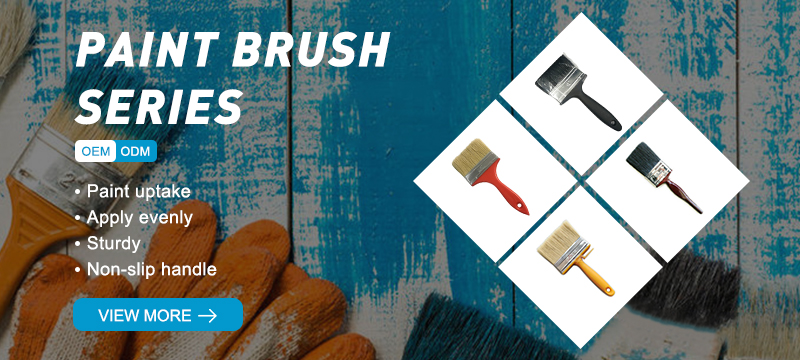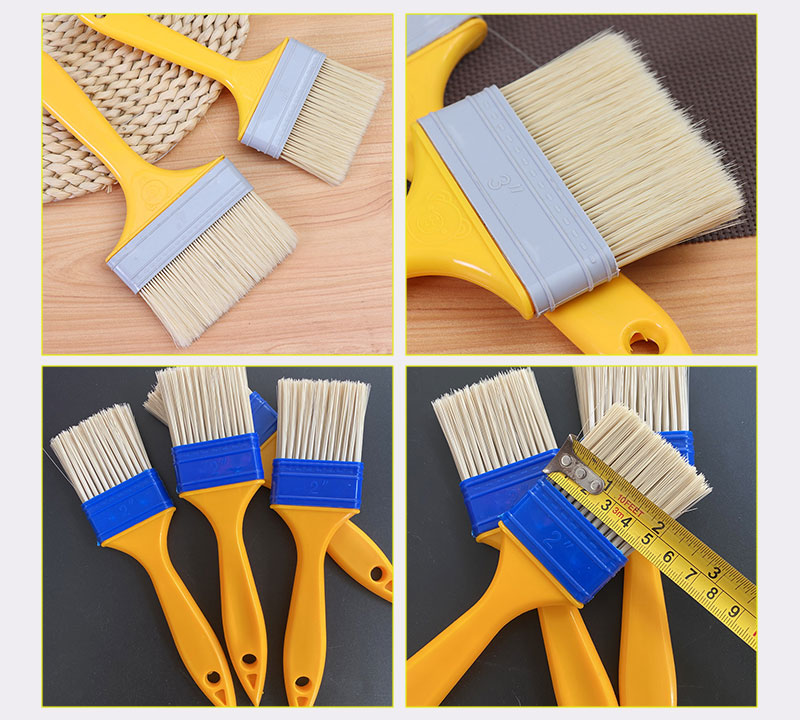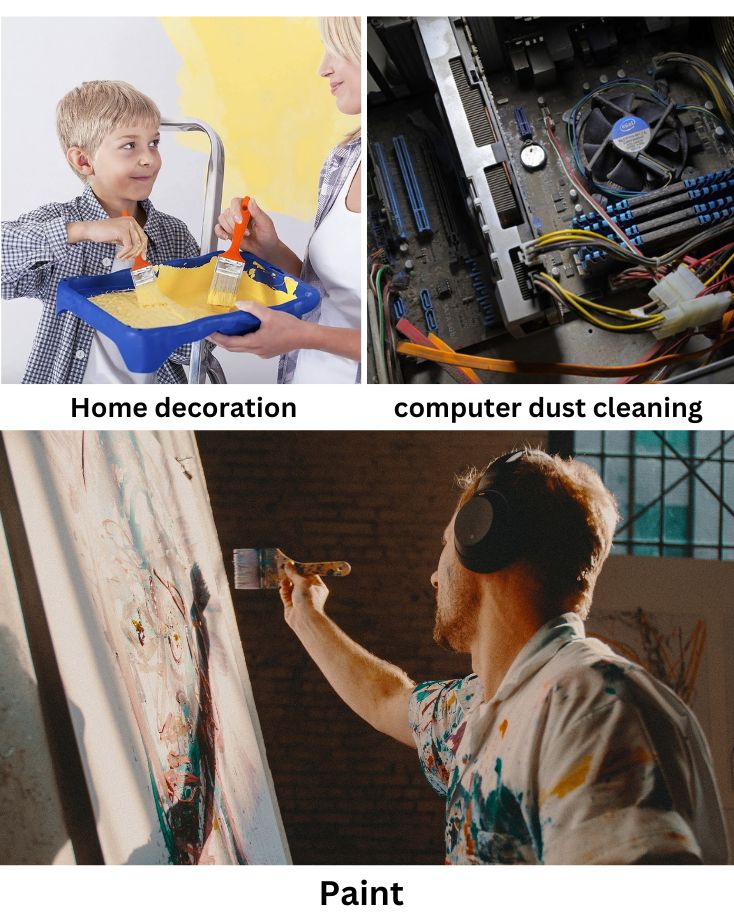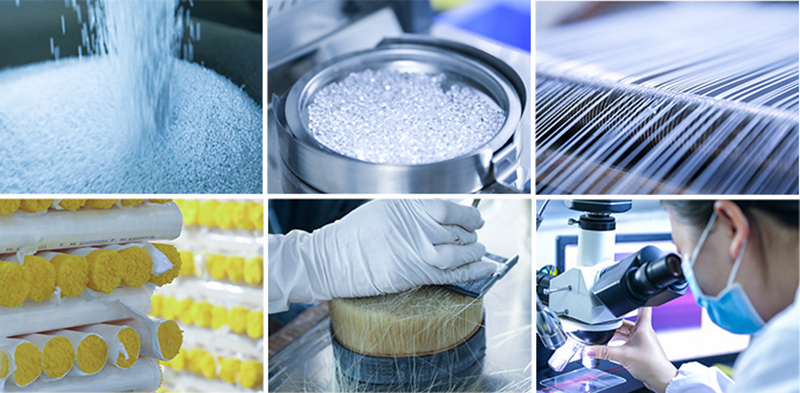





NaN / 0
Exceptional Results Every Time: High-Performance Painting Brushes for Professional Painters
Get Latest Price
US$ 0.01 - 1.13
Min.Order: 2000 Pieces
Quick Details
Model NO:
YQS-PT002
Transport Package:
Carton
Origin:
Zhejiang China
Hair Material:
Nylon
Product Details
Paint Brush Description
Painting brushes are one of the most essential tools for home refurbishment and there are many different types available based on the materials used. These include natural animal hair bristle brushes, synthetic bristle brushes, nylon and polyester bristle brushes, and wall painting brushes. The latter is a must-have tool for wide painting areas like walls and ceilings, and is generally made of wood and plastic. A paint brush typically consists of five parts including the handle, bristle, ferrule, toe, and belly. You can choose the right painting brush for your project based on your needs, for instance, the synthetic bristle brush is ideal for wide-area painting and comes at a cheaper price point. However, if you want a better rendering effect, the natural bristle brush can be your go-to option. We offer a wide range of paint brushes to cater to all your needs.

Paint Brush Detail Show

Paint Brush Application

Painting Brush Production Process
Mixing the bristle:
First, the bristle in the same bundle must be of the same length and taper ratio. They are brought into the plant in a bundle and the different sizes and tapers of bristle are mixed and untied together. They are then placed in the same direction on a mixing machine, which has a series of belts that move back and forth to fold and shuffle the bristle together. This process continues until the bristle is completely mixed.
Picking the bristle and adding a ferrule:
Once the bristles are completely mixed, they move on to the process of picking the bristle. First, the mixed bristles are put into a machine that pinches off the proper amount of bristle to form the size of the brush. The machine then takes the bristle for individual brushes and pushes it into a metal ferrule, which is an oval band that helps attach and hide the attachment of bristle to the brush.
Adding the plug:
The combination of bristle and ferrule is then put on a conveyor belt for patting the bristle further into the ferrule. When the bristle is pushed halfway into the ferrule, it is sent to the plugging station. A wooden or cardboard plug is automatically pushed into the "butt end" of the ferrule, which is already cut to fit the size of the ferrule for the brush width under construction. Then the bristle and plug are patted again to ensure that the bristles and plug are against the top edge of the ferrule.
Epoxying the bristles:
The brushes are pulled off the line by hand and put into racks with the ferrule end sticking up. They are then sent to the gluing station. Here, the epoxy is injected into each butt-end of the brush using a special injection machine for a squirt of epoxy by touch of a trigger. This process is done with a hand-operated pump brush by brush.
Finishing the bristles:
Once the brush head is done and injected with epoxy, it moves on to the brush head finishing process. The head goes through a series of devices that clean out all loose hairs that escaped the epoxy. The ends of the brush head that are dipped into paint need to be slightly feathered or split to ensure they are finer and pick up paint more easily. The finer bristles also mean fewer brush strokes when the paint is dried. The ends are then tapered and split using clippers. After this process, the brush is left out to air dry overnight.
Making the handles:
The brushes have plastic handles that are injection molded. To produce such plastic handles, a mold with two halves is clamped together, and the molten plastic is injected into the mold. The liquid plastic inside the mold hardens quickly, and then the mold is opened.
Putting on the handles:
The brush heads are taken one at a time and inserted with a plastic molded handle against the ferrule. After insertion, the handles are crimped to the ferrule to guarantee that the brush head can be securely attached to the handle.

Company Profile

If you are interested in our products,Please feel free to contact us!


FAQ

1.What types of hardware, tools, and locks do you supply?
Answer: We provide a diverse range of hardware and tools, including a variety of locks such as padlocks, door locks, and specialty locks. Our tools cover both hand tools and power tools for various applications.
2.Can I request product samples before placing a bulk order?
Answer: Yes, we encourage clients to request samples to evaluate the quality, durability, and functionality of our hardware, tools, and locks before committing to a larger order.
3.What is the minimum order quantity (MOQ) for your products?
Answer: The MOQ varies depending on the type of product. Please contact our sales team for specific information about MOQs for locks, tools, or other hardware.
4.How do you ensure the quality of your tools and hardware?
Answer: We implement stringent quality control measures at every stage of production to ensure that our locks and hardware meet the highest standards. Our team conducts thorough inspections and testing.



















